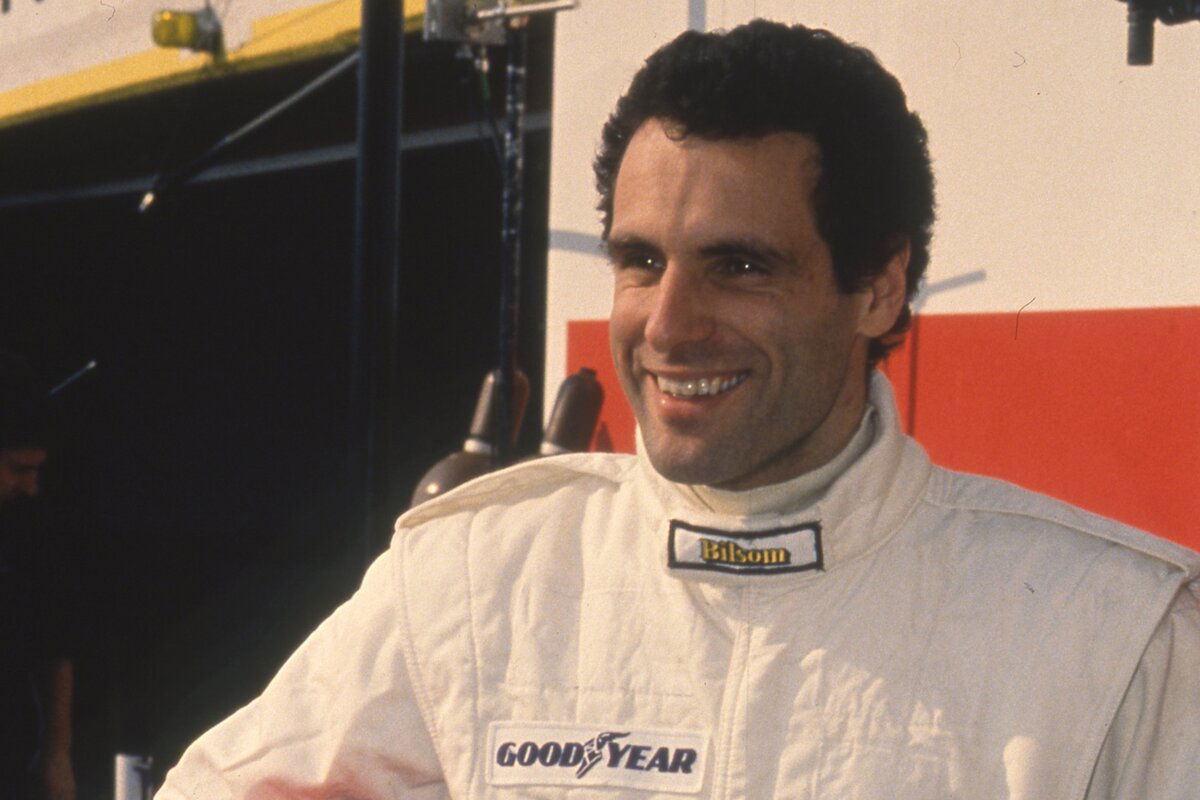

The Austrian hit the wall at the flat-out Villeneuve right-hander after the front wing of his Simtek became dislodged and wedged under the front of his car.
He impacted the barrier at over 300km/h, becoming the first Formula 1 driver to lose their life at a grand prix event since Riccardo Paletti in 1982.
The 33-year-old Ratzenberger was entering only his third grand prix as part of a five-race deal with Simtek, where he was team-mate to David Brabham.
The car was uncompetitive and he failed to qualify for the season-opening Brazilian Grand Prix before finishing 11th at the Pacific Grand Prix. Racing in F1, even at the back of the grid, was the culmination of a lifetime’s ambition.
Ratzenberger’s career began working as a racing instructor before competing in Formula Ford in the early 1980s.
He won the Formula Ford Festival at Brands Hatch in 1986 at the age of 26, beating the likes of Eddie Irvine.
From there, he graduated to the World Touring Car Championship and was part of the Schnitzer Motorsport squad that appeared at Bathurst in 1987, a programme that was dovetailed with Formula 3 outings in the British and Euro Series for West Surrey Racing.
In 1989, he moved up to F3000 and finished third in the British Formula 3000 championship, a competition in which future world champion Damon Hill made a cameo appearance.
Ratzenberger also had limited outings in DTM, the World Endurance Championship and raced in the 24 Hours of Le Mans.
The following year, he focused his racing in Japan, competing in the Japanese Touring Car Championship, All-Japan Sports Prototype Championship, and Japanese Formula 3000.
That saw him again race at 24 Hours of Le Mans, where he won his class with Toyota in 1993.
Finally, in 1994 he secured funding that landed him the drive at Simtek – having been in the running for a seat with Jordan ahead of its F1 debut in 1991.
It was an uncompetitive package and a deal that only guaranteed him a handful of races at the start of the year, but he’d accomplished his goal of racing at the sport’s pinnacle.
His career was cut short when he crashed at Imola, sending shockwaves through the sport on a weekend that had already experienced high drama.
A day earlier, Rubens Barrichello crashed at the final chicane, swallowing his tongue in the impact before being taken to hospital.
In the aftermath of Ratzenberger’s crash, Ayrton Senna rushed to the medical centre where he was informed of the Austrian’s death by Professor Sid Watkins.
F1 supremo Bernie Ecclestone communicated that news to the team, with his Simtek team-mate electing to carry on with the weekend.
On track at the time of Ratzenberger’s crash, Brabham had driven past the Austrian as he sat slumped in the car, the circuit littered with debris from the crash.
“Everyone was in a state of shock. Nobody could comprehend what had happened,” Brabham explained.
“I don’t remember much until the evening when the team sat me down and told me that the decision was up to me whether we continued to race.
“I thought I have to pick this team up and continue what we’re doing. I decided to race, really for the guys.”
Ratzenberger was buried in Maxglan, in Salzburg, his memorial attended by Brabham, Johnny Herbert, Heinz-Harald Frentzen, Karl Wendlinger, Gerhard Berger, and FIA president Max Mosley.






















Discussion about this post